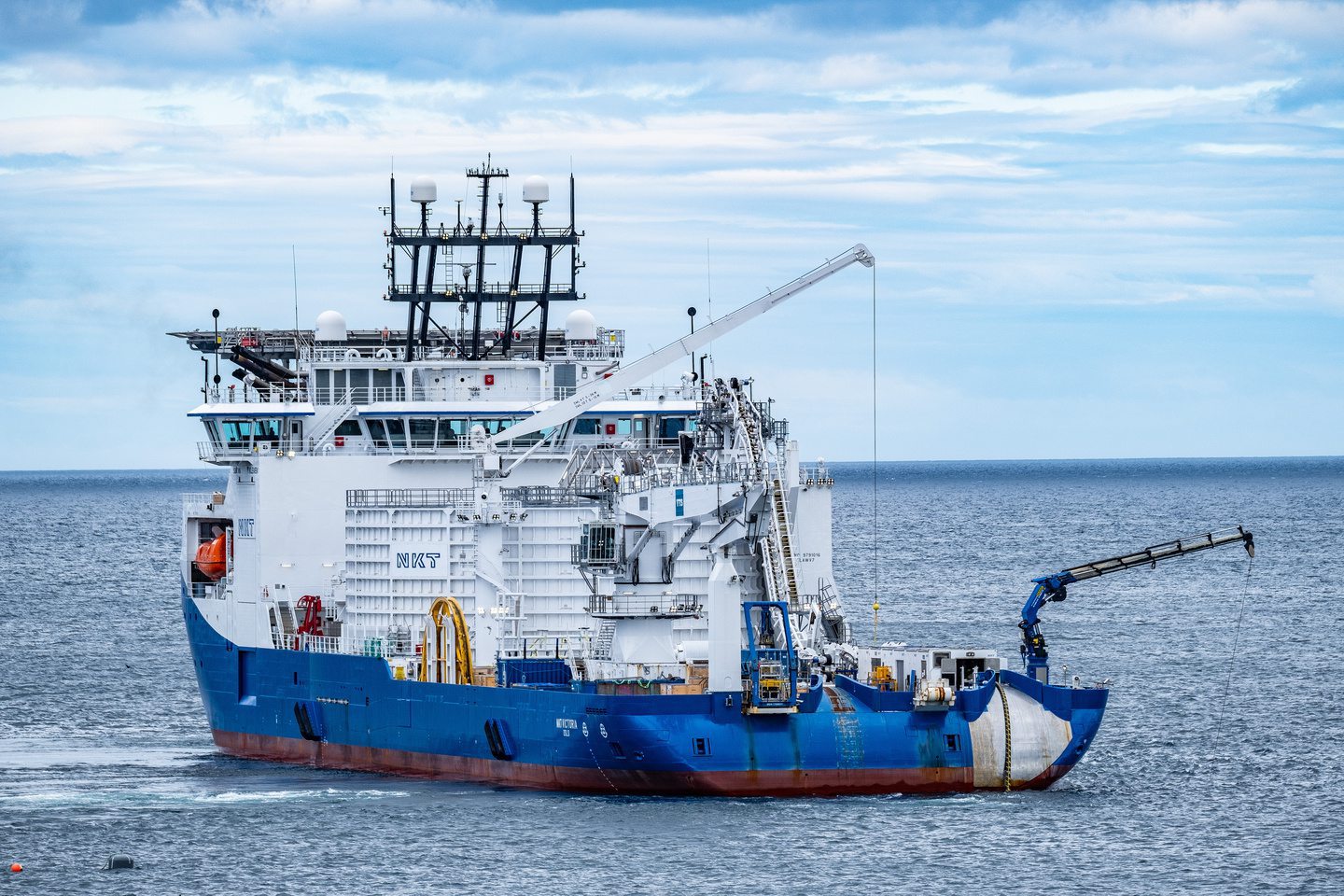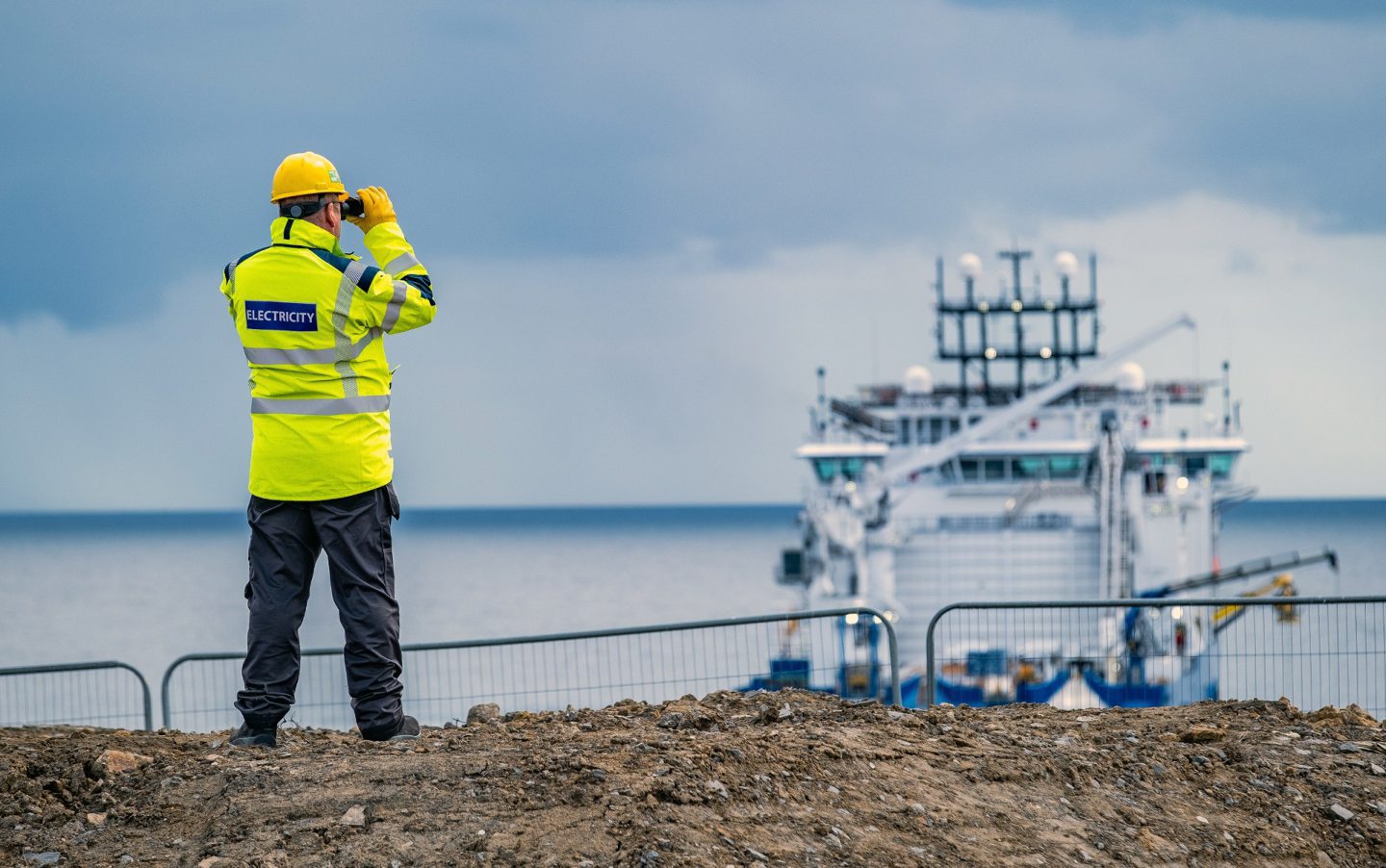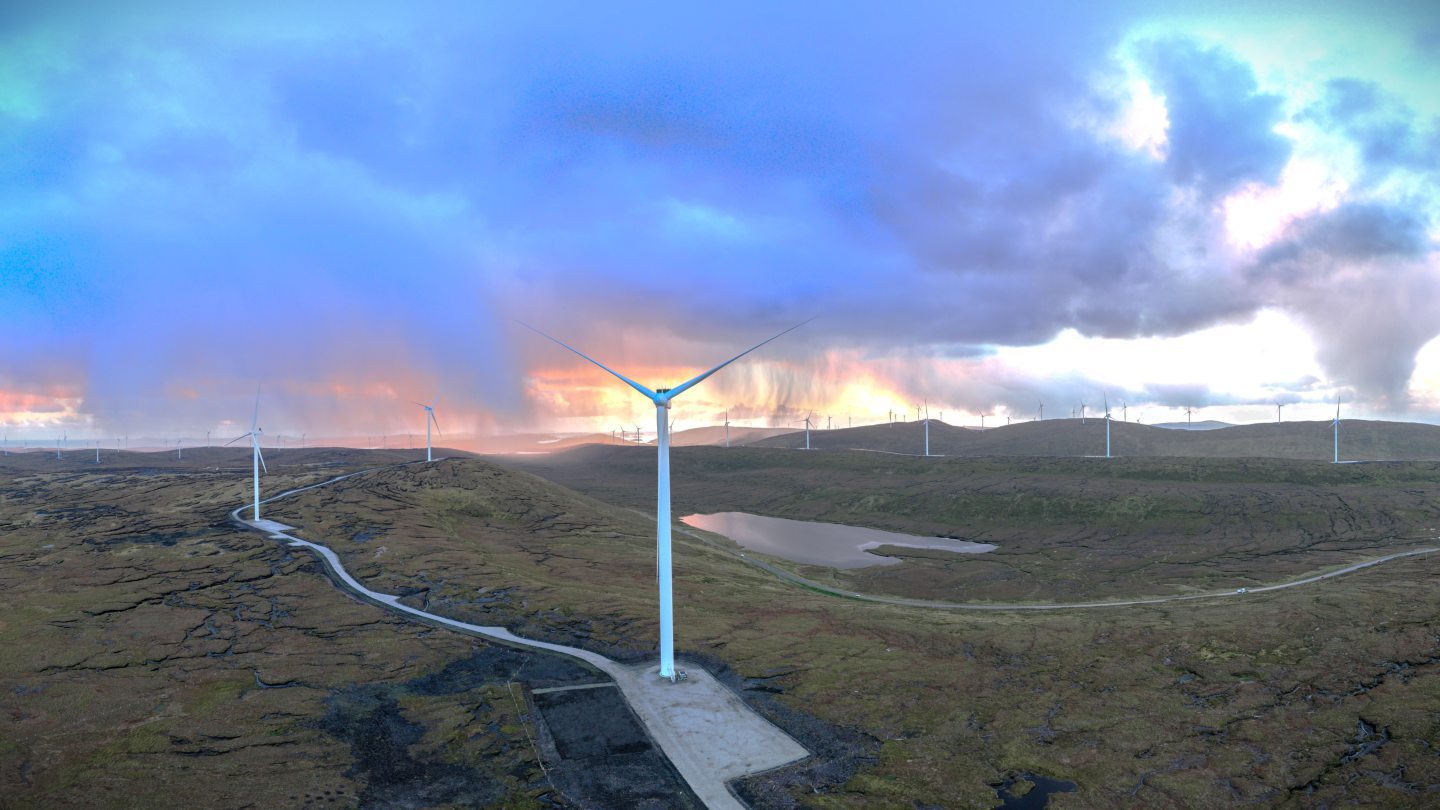The UK renewable sector has reached a “historic milestone” with more than 30 GW of wind generation capacity deployed for the first time.
The milestone came after SSEN Transmission completed work on a subsea cable linking the SSE Renewables Viking Wind Farm on Shetland to the UK grid.
Connecting the Shetland wind farm boosted UK wind capacity by 443 MW, tipping the sector over the 30 GW mark across both onshore and offshore projects.
Scotland’s First Minister John Swinney said the completion of the wind farm and 160 mile cable is a “significant step” in unlocking Shetland’s green energy potential.
“These developments will not only aid us in our efforts to decarbonise our energy system, but help to stimulate sustainable economic growth in the local area,” Swinney said.
“It is welcome that Scotland’s onshore wind capacity continues to expand.
“This is a vital component of our mission to bring about a just transition to net zero.”
Energy secretary Ed Miliband said switching on Viking will benefit thousands of homes in Shetland and across the UK.
“This shows why we need more developments like this to make Britain a clean energy superpower – and that is why we lifted the onshore wind farm ban in our first 72 hours in government,” Miliband said.
“This will be a crucial part of delivering our mission for clean power by 2030 – reducing our reliance on volatile fossil fuel markets, boosting our energy independence and protecting consumers.”
UK wind generation passes 30 GW
RenewableUK said the 30 GW of wind generation is enough to power more than 26 million homes and reduce carbon emissions by more than 35 million tonnes each year.
Renewable energy generation provided a record 46.4% of UK electricity demand in 2023 according to statistics released by the UK government in July.
Overall, wind remains the biggest source of renewable energy in the UK, generating a record 28.1% of total electricity demand last year and more than 60% of renewable generation.
RenewableUK executive director of policy and engagement Ana Musat said wind power will be the “backbone” of the future UK energy system.
“It took 26 years to install the first 15GW of wind energy in the UK, so to double that to 30GW in just seven years represents a tremendous success for the industry,” Musat said.
“As the latest record-breaking figures from the government show, wind is the backbone of our future energy system and a key driver of our transition away from expensive and volatile fossil fuels to become a clean energy superpower.”
Musat said RenewableUK research shows doubling UK onshore wind capacity by 2030 would boost the economy by £45 billion and create 27,000 jobs.
UK wind sector ramps up
The UK installed its first commercial onshore wind farm at Delabole in Cornwall in 1991, with the first offshore project coming at Blyth in 2000.
RenewableUK said wind deployment initially climbed slowly from there, reaching 1 GW in 2005 before hitting the 5 GW mark in 2010.
From there, deployment increased rapidly, hitting 10 GW in 2013 and 15 GW by 2017.
In the past seven years, wind capacity has since doubled to hit 30 GW. The UK has targets to significantly ramp up the rollout of wind projects by the end of the decade.
Sir Keir Starmer’s new Labour government is aiming to double onshore wind capacity to 30 GW, and quadruple offshore wind capacity to 60 GW.
Labour has already boosted the budget for the upcoming, renewable energy auction, removed a de facto ban on onshore wind in England, and outlined plans for GB Energy and The Crown Estate to work more closely to boost offshore wind.
But there is growing scepticism within the wind industry about its ability to meet 2030 targets, with the UK on track to miss nearly all of its floating wind targets.
Scotland’s wind sector
Approximately 48% of the 30 GW UK wind generating capacity is located in Scotland, with onshore projects currently delivering 9.5 GW.
Meanwhile, offshore wind farms in Scottish waters account for 5 GW of UK capacity.
The Scottish government also has ambitious targets to increase capacity, setting an 11 GW target for offshore wind deployment by 2030 and a 20 GW goal for onshore wind.
Scottish Renewables director of onshore Morag Watson said Scotland’s wind industry “continues to be at the forefront” of the UK’s clean energy future.
“Wind power is one of Scotland’s greatest environmental and economic success stories, from the first-ever wind turbine built in Aberdeenshire in 1887 to an industry which now delivers 27,000 jobs and more than £7 billion to our economy while helping combat climate change,” Watson said.
“With 48% of the UK’s operational capacity here in Scotland it is quite fitting that it is the Viking wind farm, a Scottish project, that takes us past the 30GW milestone.”
Shetland’s Viking Energy Wind farm
Despite these challenges, the industry is still seeing positive progress as projects Shetland’s £1.2 billion Viking wind farm come online.
Consisting of 103 turbines and connecting to the UK grid via a subsea cable, Viking is set to be the country’s most productive onshore wind farm thanks to high winds.
SSE chief executive Alistair Phillips-Davies said Shetland and the wider North Sea have “long supported” UK energy security and are now playing a key role in decarbonisation.
“But it has taken nearly two decades for these projects to move from concept to completion and if we are serious about delivering clean power by 2030 – less than 2,000 days away – we need to make it much easier and faster to build this kind of mission-critical infrastructure,” he said.
SSE Renewables managing director Stephen Wheeler said the company is proud to account for 10% of the 30 GW of wind capacity across the UK.
“As the largest onshore wind farm to be built in the UK in nearly ten years, the completion of [Viking] is a big moment in its own right – and contributing to this milestone for the industry makes it even more special,” he said.
“Viking will now play a major role in the UK’s net zero transition, harnessing Shetland’s unparalleled wind resource to become the country’s most productive onshore wind farm.
“It’s clear, however, that we need to go faster if we’re to have a chance of delivering a zero-carbon energy system by the end of this decade, and we stand ready to play our part in hitting many more milestones in years to come.”
Recommended for you

BlueFloat Energy, Nadara bring in FMS to support floating wind projects


 © Supplied by SSE
© Supplied by SSE © Supplied by SSE
© Supplied by SSE © Supplied by SSE
© Supplied by SSE